A new book explores how the filmmaker’s signature look is all around us – in everyday scenes across the globe. ‘You know it when you see it,’ its author tells Lindsay Baker.
T
There is an unmistakeable look about Wes Anderson’s films. Over the past two decades, the director’s cinematic universe has stuck steadfastly with its singular, pastel-hued aesthetic – retro, symmetrical, perfectly composed. There is a consistent whimsicality about Anderson’s vision. His is a lovingly, meticulously-created world, full of just-so details – from the endlessly quirky Royal Tenenbaums and the faded opulence of The Grand Budapest Hotel, to the folksy charm of Moonrise Kingdom and the brilliant vibrancy of The Darjeeling Limited. And doubtless more of the same offbeat eye candy will be served up once more with the release in 2021 of the director’s next film The French Dispatch.
More like this:
– Why buying vintage is ‘the new luxury’
– Fashion photography’s reluctant star
– Why change is the key to a good life
Anderson’s films all share a vision – they are apparently too unique, vibrant and deliberately constructed to possibly be real. Or are they? Not necessarily, it seems. The real world’s most Wes-like places have now been gathered in a book, aptly named Accidentally Wes Anderson. Celebrating the singular aesthetic that Anderson fans love, each image featured in the book captures the elements of that vision – symmetry, unexpectedness, vibrancy, quirkiness. The stranger-than-fiction story behind each location is told in accompanying text.
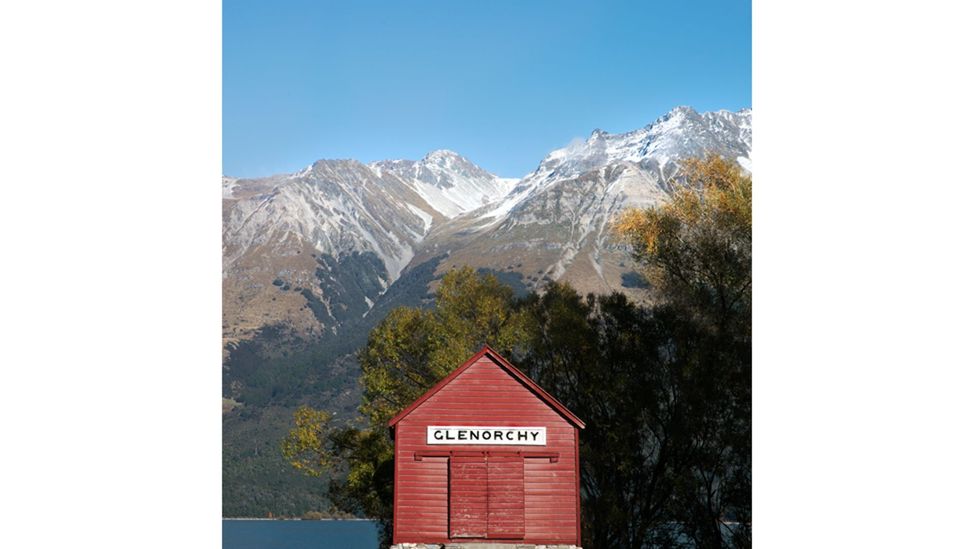
Wharf shed, Glenorchy, New Zealand – the crowd-sourced images of the book all share the Wes aesthetic (Credit: Frida Berg)
“You know it when you see it,” says the book’s author Wally Koval of the immediately identifiable style. Brooklyn-based Koval is the founder of the Accidentally Wes Anderson project, which began “on a whim”, he tells BBC Culture, as a “personal travel bucket list” of places that he and his wife – and partner in the project – Amanda wanted to one day explore. He began to realise that all of these real places around the world had something in common – they all looked like “accidental captures” from one of Anderson’s movies.
Koval started to post pictures of these real-life scenes on Instagram, along with a snippet of information or an anecdote about each one, always including in the post the hashtag ‘AccidentallyWesAnderson’. He soon found that others joined him by using the same hashtag, and the community rapidly grew. “The handful of people that found it early on became kind of like a travel ‘book club’ of sorts – we would share interesting facts about locations we had travelled to, and we have tried to maintain that to this day.”
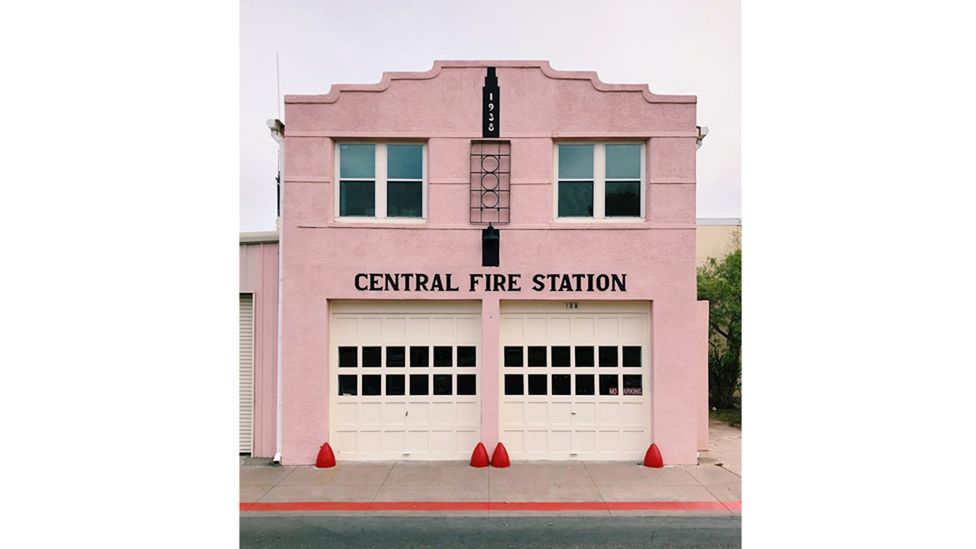
Central fire station, Marfa, Texas – each photograph featured in the book has a story or anecdote accompanying it (Credit: Emily Prestridge)
Accidentally Wes Anderson is now a “global community of adventurers”, he says, who post pictures on Instagram of beautiful and unusual places around the world that all share the Wes aesthetic. And it was this community of like-minded souls on social media that inspired the spin-off book, in which Koval hones down the choice of crowd-sourced images to 200 of the most interesting places found by various members of the global community.
The photographs span 50 countries, and none of the locations shown have actually appeared in an Anderson movie. But, says Koval, “this is not just a travel book, it is a mood board, an escape hatch from the day-to-day, a moment of delight – and hopefully it inspires adventure and exploration just the same.” It’s a community made up, he says, of “people who are seeking a moment of delight, and hopefully [will] walk away with a smile and a new interesting titbit they didn’t know before”.
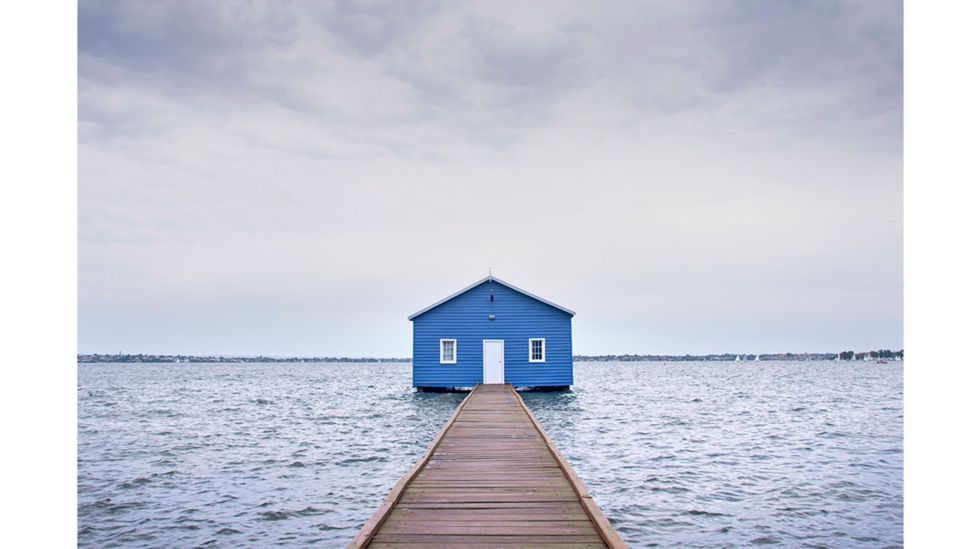
Crawley Edge boatshed, Perth, Australia – there is a pleasing symmetry to the photos (Credit: James Wong)
So what particularly drew Koval to the films of Anderson? “Visually each is set in the ‘real world’ while evoking somewhat imaginary qualities. And while the settings and scenes are all perfectly placed, the underlying narrative and the inner struggles of the characters are quite contrastingly complex. What we share is the IRL embodiment of this, and I think the fact that these ‘bigger than life’ locations can be found in our everyday is pretty incredible.”
Picture perfect
The images in the book depict many different corners of the globe – each one evoking a mood reminiscent in some way of the Anderson oeuvre. From a perfectly symmetrical scene of a brilliant blue, lonely-looking boat house at the end of a jetty in Perth to the image of Amer Fort in Rajasthan, with pristinely uniformed guards neatly lined up, keeping watch from the vivid yellow fort against an azure sky, each picture calls to mind his vision.
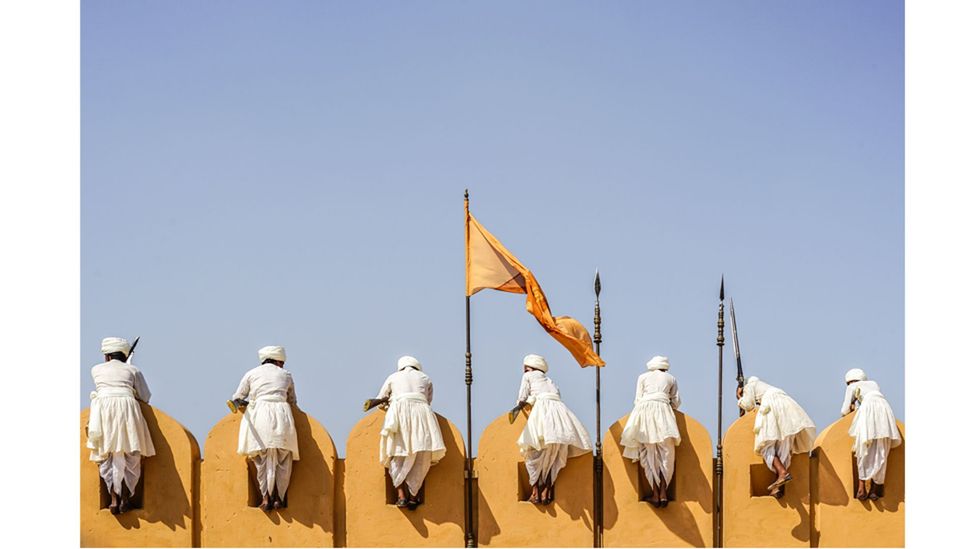
Amer Fort, Rajasthan – the book’s images all share an offbeat, intriguing charm (Credit: Chris Schalkx)
And the book, which has recently landed on the New York Times bestseller list, benefits from the inclusive, community-led nature of the Accidentally Wes Anderson phenomenon (or AWA as Koval calls it): “AWA is a unique combination of beauty, substance, and context. It is a rare place where you can find conversation around a topic that is overwhelmingly positive. I think the reason that it has grown has to do with a lot of factors, but one being that it is truly open to anyone.”
As in the films, it is the stories attached to each image that have also helped to make AWA appealing to such a large number of people across the world. “There is another level to each of the locations that we share,” says Koval. “The stories behind the facade that make them so much more than just a pretty picture. So I would hope that intention has helped to grow the community as they have shared their own personal stories and experiences along the way.”
There is a modest, vernacular charm to many of the scenes – among them a rustic wharf shed in front of a stunning New Zealand mountain backdrop. There’s the sense that Accidentally Wes Anderson fulfils a need in us to see beauty in the everyday or unexpected. Koval agrees. “And it’s an invitation to look at the world through a slightly different lens, or step to the side and take something in from a slightly different perspective… There is so much beauty in the everyday – from the buildings we pass on our morning commute, to the overlooked stories we’ve never really investigated because… we never knew they were there.”
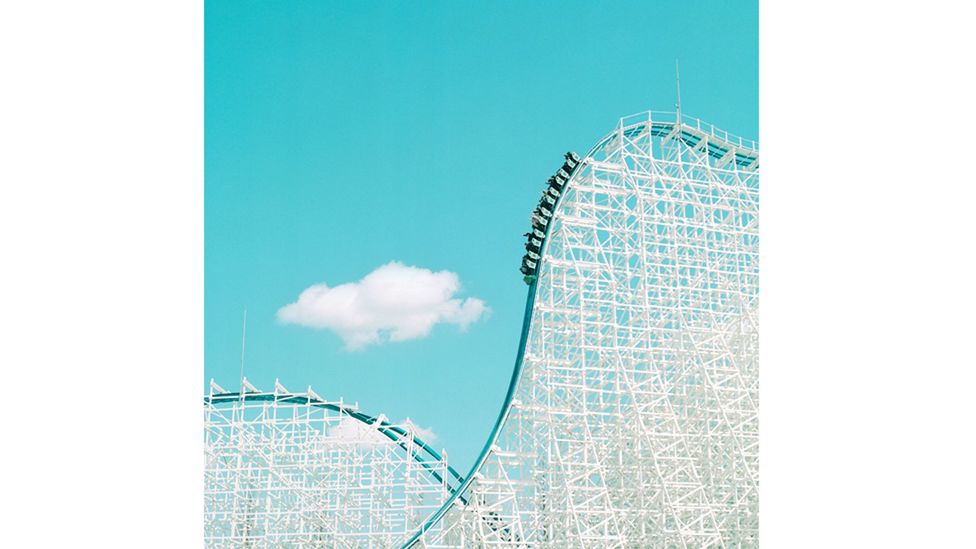
The White Cyclone, Kuwana, Japan – the meticulous composition of the photographs echoes Anderson’s cinematic style (Credit: Paul Hiller)
Fortunately, Wes Anderson himself has reacted well to the project. “When he gave us his blessing to move ahead, we were thrilled,” says Koval. “But when he saw the finished piece and agreed to pen a few words – reading those few short paragraphs was the perfect stamp of approval in perfect fashion.”
Accidentally Wes Anderson raises interesting questions about fact versus fiction, and reality versus fantasy. So which is better, ‘accidental’ or ‘actual’ Wes Anderson? “I see one as being an extension of the other, and each interesting in their own right,” is Koval’s view. Wes Anderson himself puts it another way in his foreward to the book: “I now understand what it means to be accidentally myself. Thank you. I am still confused what it means to be deliberately me, if that is even what I am, but that is not important. I send my very best wishes and much gratitude to this group for discovering and sharing all these peculiar and fascinating vistas.”
Accidentally Wes Anderson by Wally Koval is published by Orion.
If you would like to comment on this story or anything else you have seen on BBC Culture, head over to our Facebook page or message us on Twitter.


